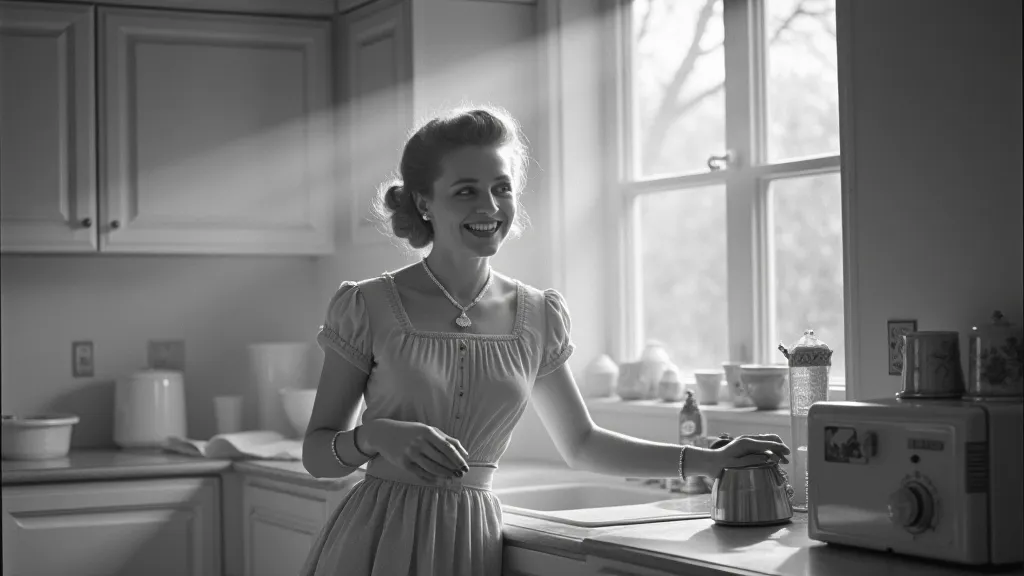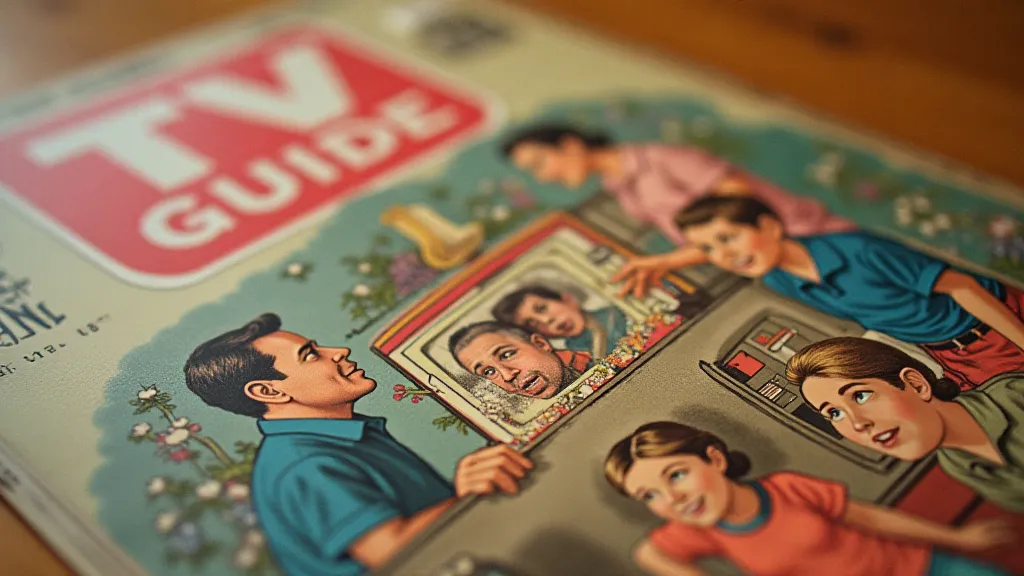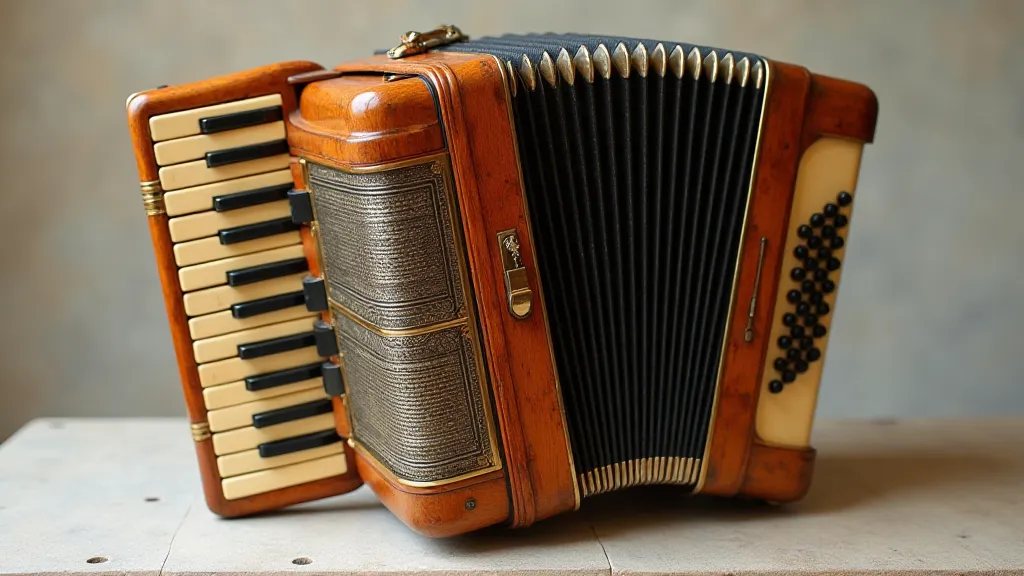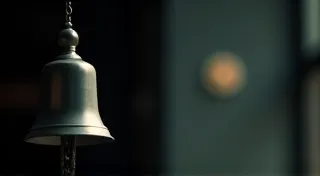A Catalog of Moments: Finding Meaning in the Fleeting Appearances in TV Guide Ads
For those of us captivated by vintage television, the TV Guide isn't just a listing of programs. It's a time capsule, a window into a specific cultural moment. And while the listings themselves hold a certain allure – a nostalgic echo of evenings spent gathered around the flickering glow of the cathode ray tube – it's the advertisements that often reveal the truly fascinating details of an era. These weren’t just selling products; they were selling a dream, a lifestyle, a promise of the American experience as imagined in the 1950s, 60s, and even early 70s. It's a world I've spent years exploring, and I've learned that studying these ads is akin to uncovering a hidden narrative layer within the TV Guide itself.
My own fascination began unexpectedly. As a child, while helping my grandmother sort through old belongings, I stumbled upon a stack of TV Guides from the late 1960s. It wasn’t the shows that initially grabbed my attention, but rather the advertisements. There was a certain...ordinariness about them, a stark contrast to the glamorous portrayals often associated with the entertainment industry. A woman in a perfectly pressed dress, promoting laundry detergent. A family gathered around a car, laughing, their faces radiating an almost unnatural joy. It felt…real. These weren’t aspirational in a flashy way; they were quietly suggesting a desired normalcy.
The Craft of the Image: More Than Just a Sales Pitch
The beauty of these vintage ads isn't just about the aesthetic; it’s about the craftsmanship. Remember, these weren't created in the digital age. Photographers relied on meticulous lighting, set design, and, crucially, the models themselves. The poses, the expressions – everything was carefully orchestrated to convey a specific message. Studying the composition of these ads reveals a deep understanding of visual communication, a skill often lost in today’s hyper-digital landscape. The use of natural light, for example, was almost universally employed, creating a warm, inviting feel that instantly conveyed a sense of authenticity.

Consider the models. They weren’t necessarily professional actresses in the Hollywood sense. Often, they were "everyday" people – teachers, nurses, housewives – selected for their ability to embody the desired image of the target consumer. This “relatability” was key to the advertisements' persuasive power. They weren’t presenting a fantasy; they were presenting a possibility – a vision of how life *could* be if you purchased their product. It’s fascinating to consider how these carefully constructed images reflected the broader American dream and the cultural anxieties of the time – a theme further explored in articles like Mirrors of Consumption: How Advertising in Vintage TV Guides Reflected American Dreams.
Decoding the Narrative: Gender Roles and Societal Shifts
Beyond the surface, these advertisements offer a fascinating window into the societal norms and gender roles of the time. The 1950s and early 1960s were dominated by images of the idealized housewife – perpetually smiling, effortlessly managing a spotless home, and dedicated to the happiness of her family. These images, while seemingly innocuous, contributed to a specific (and often limiting) perception of women’s roles in society. You can practically hear the unspoken messaging: a happy home equals a happy wife, and a well-managed household is a measure of her worth.
As the 1960s progressed, however, subtle shifts began to appear. While the traditional housewife image persisted, cracks started to show. Advertisements began to feature women in slightly more progressive roles – pursuing hobbies, engaging in outdoor activities, even hinting at careers. These changes, though gradual, reflected the burgeoning feminist movement and the changing expectations of women in American society. The emergence of "Mad Men" helped highlight this, reminding us that these curated images were powerful symbols of an evolving era. The societal shifts, and how they are reflected in these materials, is something that dedicated researchers, like those who wrote Beneath the Glossy Covers: Unpacking the Social Commentary in 1950s Television Programs, have detailed at length.
The portrayal of men also underwent a transformation. Initially, men were often depicted as the breadwinners, authoritative figures, and masters of their domain. Later, there was a move towards showcasing a more approachable, family-oriented man—the "sensitive" dad, embracing a more involved role in domestic life. It’s fascinating to track these portrayals through the TV Guide’s pages, observing the slow dismantling of rigid gender stereotypes. Sometimes, the details in these advertisements almost feel like echoes of forgotten programs - prompting thoughts of what lost narratives might be lurking within these precious artifacts, something you can delve into further reading about Lost in the Listings: Reconstructing Forgotten Television Programs Through Collector Accounts.
Collecting the Ephemera: Rarity and Preservation
For collectors, vintage TV Guides offer a wealth of possibilities. While early issues from the 1950s are highly sought after (and command premium prices), even later editions can be valuable, particularly those featuring significant historical events or memorable television moments. Certain advertisers also became sought-after prizes. The rarity often depends on geographic distribution; TV Guides were regionally specific, meaning a guide from a smaller market might be significantly rarer than one from a larger metropolitan area. Determining the true worth, and verifying the authenticity of your finds, relies on a deep understanding of the nuances of collecting. Those seeking definitive answers would benefit from the guidance available in The Curator’s Codex: A Practical Guide to Identifying First Editions and Rare TV Guides.
Condition is, of course, paramount. A pristine, uncreased copy will always be worth more than a well-worn example. Preservation is key. Storing your collection in acid-free sleeves and boxes is essential for preventing deterioration. Remember, these are fragile documents, remnants of a bygone era. Proper care will ensure that they survive for future generations to appreciate.

The Evolution of Branding: More Than Just Paper and Ink
Beyond the advertisements themselves, the TV Guide represents a fascinating study in branding and design evolution. Consider the typography – the fonts used, the layout, the overall aesthetic. Early editions often utilized classic, somewhat formal typefaces, reflecting the more conservative tone of the time. As the decades progressed, the design became more dynamic, incorporating bolder fonts and more modern layouts. The visual language of the TV Guide itself mirrored the broader changes happening in American culture. Examining the subtle shifts in typography provides a unique perspective on the passage of time, and it’s something that a dedicated study of the era would find rewarding. The changes, and how they occurred, demonstrate a planned trajectory; a deliberate attempt to remain relevant over decades. For those interested in the data-driven reasons behind these shifts, the insights in The Paper Prophets: Predicting Audience Trends Through Historic TV Guide Subscription Data are illuminating.
A Deeper Appreciation: More Than Just Listings
My fascination with the advertisements in vintage TV Guides isn’t just about collecting rare items. It's about connecting with a specific moment in time. It's about appreciating the artistry and craftsmanship that went into creating these images. And it's about understanding the cultural forces that shaped them. They're not just remnants of a time when television was the primary source of entertainment; they are mirrors reflecting the hopes, dreams, and anxieties of an entire generation. It's a reminder that even what seems mundane has the potential to reveal larger, societal shifts.
The act of studying these ads, of dissecting the symbolism and the unspoken messages, has given me a deeper appreciation for the power of visual communication. It’s reminded me that even the most seemingly ordinary objects can hold extraordinary stories. And that, for me, is the true value of a vintage TV Guide collection - a catalog of moments, a glimpse into the fleeting appearances of a forgotten world. It’s an ongoing journey of discovery, a constant reminder that history isn’t just about dates and events; it’s about the people, the images, and the stories that shape our lives.






